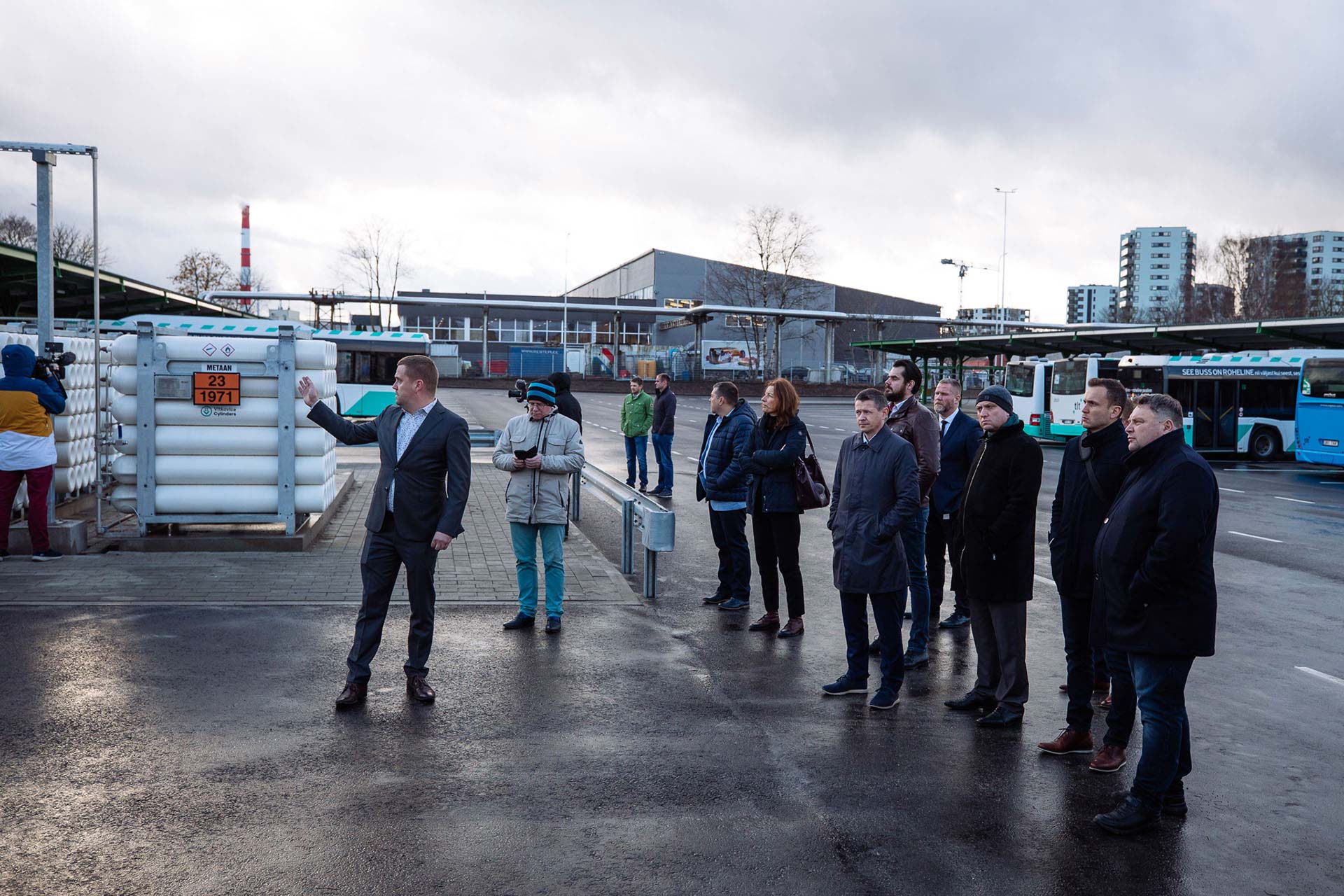AS Tallinna Linnatransport (TLT), in collaboration with Bioforce Infra OÜ, has opened the largest and most capable compressed gas station in the region in Tallinn. Spanning 25,000 square meters, the station features 120 fuelling points and two high-speed dispensers, supplying compressed gas to 200 public transport vehicles in the capital. It is the most powerful station of its kind in the Baltics and Finland.
“Transitioning to gas-powered buses and developing new infrastructure is a significant step for advancing an eco-friendly transport system for Tallinn and all of Estonia. Replacing current diesel-powered public vehicles with gas buses and adopting greener fuels aligns with Tallinn’s goal of being a green capital. By 2025, TLT and the city aim to phase out diesel entirely. Besides environmental sustainability, the renewal of the bus fleet will also reduce repair and maintenance costs associated with old infrastructure,” said Deputy Mayor Andrei Novikov.
TLT Chairman Deniss Boroditš emphasized that the new compressed gas station on Peterburi Road marks a new phase in Estonia’s public transport sector. “This modern bus terminal, combined with the largest and most capable compressed gas station in our region, represents a major advancement in public transport. The transition to gas-powered buses has made Tallinn’s city transport the largest compressed gas consumer in the Estonian transport sector. Currently, 200 compressed gas buses serve the capital, and another 150 are set to be added next year. Notably, the planned fleet of 350 gas buses will consume about 200 GWh of compressed gas annually. This shift to gas in public transport is one of the largest eco-friendly upgrades in recent years, and the increased demand encourages producers to scale up, fostering competition and improving the accessibility of green fuels,” Boroditš explained.
The region’s largest compressed gas station on Peterburi Road was built by Bioforce Infra OÜ, in partnership with Verston Ehitus, following Bioforce’s successful bid for Tallinn’s public transport gas tender. Bioforce Infra OÜ Chairman Henry Uljas noted that the newly completed station includes 120 slow-fueling points, as well as two high-speed dispensers. “In the slow-fuelling area, up to 120 vehicles can be simultaneously fuelled within four hours, while the high-speed dispenser allows a gas bus to refuel in just 6-8 minutes. Since the capital’s public vehicles are mainly refuelled at night, when they are not in operation, the station can meet the needs of all 200 vehicles,” Uljas said, adding that they are currently constructing another station on Kadaka Road, which will soon add 200 slow-fuelling points and three high-speed dispensers within a month.
Uljas added that in the last three years, biomethane production in Estonia has tripled. “While there are five biomethane production units in Estonia today, the next few years will certainly bring at least three new biomethane plants to the market, as the demand for environmentally friendly and domestic biomethane continues to grow. For example, Bioforce OÜ is building a new plant in Aravete that will produce around 35 GWh of green gas per year. The investment will cost €4 million and the new plant is expected to be operational in February next year,” Uljas said.
At the opening of the region’s largest gas station, TLT presented new compressed gas buses that have been in operation since July.
Of the new buses, 75 are Urbino 12 models and 25 are articulated Urbino 18 models. Both types are equipped with 235 kW engines adapted for compressed gas use. The buses have updated interiors and technical features—spacious, air-conditioned cabins allow passengers to charge mobile devices via USB ports, and the buses are equipped with cameras for safety and increased driver visibility. The automatic passenger counting system allows the Urbino 12 to carry at least 80 passengers, while the Urbino 18 can accommodate 140.
The new compressed gas buses also feature fully enclosed driver cabins, enhancing driver safety and ergonomics. The control panel includes fire detection alerts and reverse sensors. Additional sensors for rain and darkness assist drivers when navigating adverse weather conditions.
